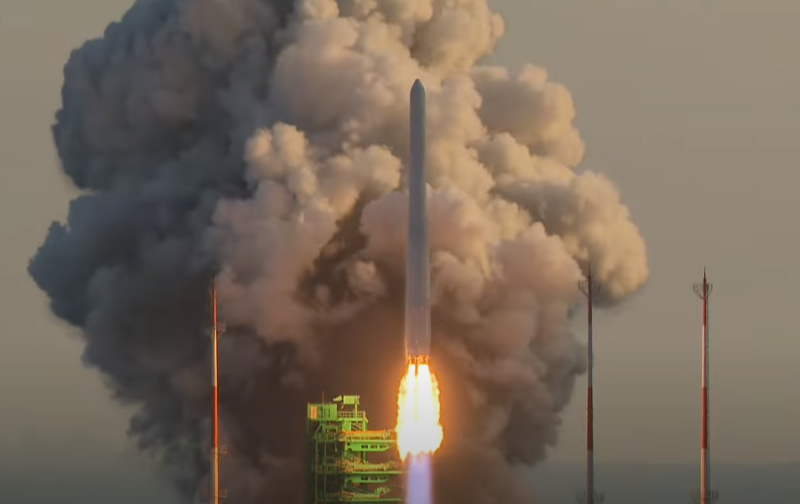South Korea's attempt to launch its own carrier rocket Nuri is considered "partially successful"
South Korea's attempt to launch the Nuri launch vehicle, entirely built by South Korean designers, failed but was deemed "partially successful." The rocket managed to reach the design altitude, but could not bring the cargo into orbit.
On Thursday, October 21, 2021, South Korea launched the first fully domestic Nuri launch vehicle from the Naro Cosmodrome in Jeollanam-do province. As a load, the rocket was supposed to launch a satellite mockup with a mass of 1,5 tons into the calculated orbit. The first and second stages of the rocket worked normally, the engines of the third stage shut down prematurely.
As stated at the Korea Aerospace Research Institute (KARI), the rocket managed to reach the target height of 700 km and even separate the payload, but due to the premature shutdown of the third stage engines, the satellite mock-up failed to enter the target orbit. Nevertheless, the attempt was recognized as "partially successful".
- said the institute.
The new KSVL-II Nuri missile is the first fully developed in South Korea, unlike the first KSLV-I Naro-1, in the development of which Russian specialists took part. Nuri is a three-stage liquid propellant rocket engine that uses kerosene and oxygen as fuel. The mass of the rocket is 200 tons with a length of 47,2 meters. According to calculations, Nuri is capable of launching a cargo weighing 300 tons into a 2,6-km orbit. A new launch is planned for May next year, again using a mock-up as a payload.
Recall that until 2020 South Korea had the right to develop space rockets only on liquid fuel in accordance with an agreement with the United States on restrictions on the development and use of rockets. Seoul received permission to develop solid-propellant engines for space launch vehicles only last year.

Information